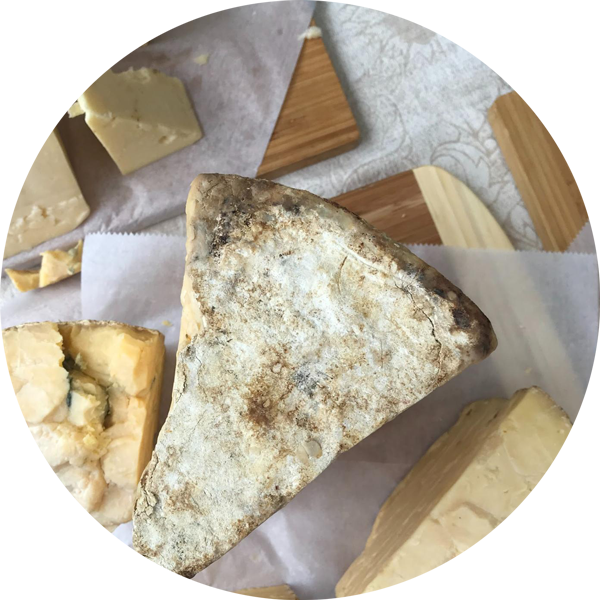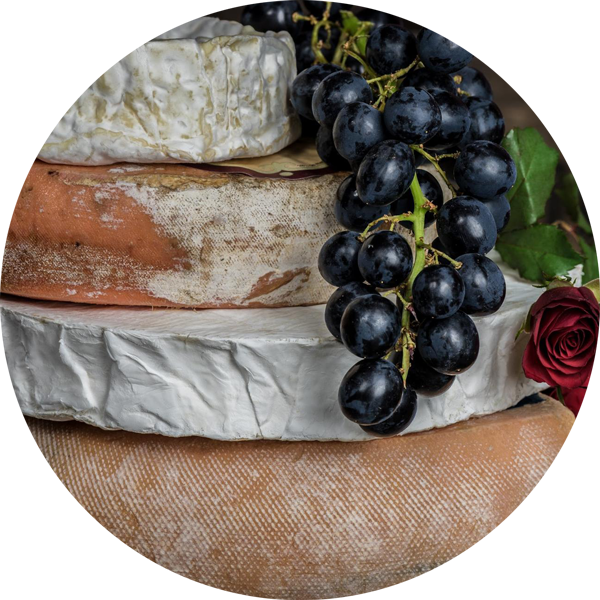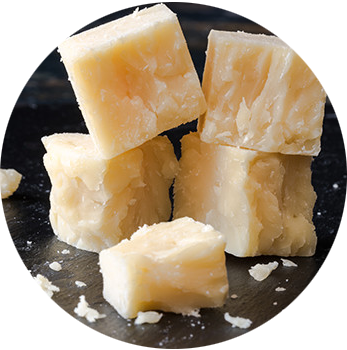How Does Cheese Aging Work?
9th Nov 2020

If you’re a DIY enthusiast or love experimenting with new recipes, cheese making is one of the most fascinating things to make from scratch. Making cheese requires one magic ingredient: milk. It also requires another key component: aging. Aging cheese occurs when bacterial culture is added to milk, it creates lactic acid from the lactose, which makes the milk sour. Rennet causes the coagulation of the fats and proteins, creating a curd. Then, salt is added throughout the rest of the process. While not all cheese requires aging, the ones with a bitter and distinct taste do. Allow our CheeseMaker expert to explain why.
As the cheese making process is quite fascinating, one of the most fascinating things about cheese is the aging process. All cheese is essentially made of the same core ingredients, but the aging process plays a role in changing the flavor and texture, resulting in thousands of cheese varieties. Each type of cheese requires a different aging period ranging from 3 months all the way up to 12 months for certain types of cheese. In order to comprehend the cheese aging process, it’s important to understand how cheese is made.

How All Cheese Starts
All types of cheese require these ingredients:
- Milk (cow, goat, sheep, or buffalo)
- Bacterial culture
- Rennet
- Salt
These ingredients for cheese affect the taste.
Cheese That Requires Aging
Certain cheeses require months or years of aging while others are better fresh. The following types of cheese require an aging process:
- Monterey Jack
- Colby
- Brie
- Camembert
- Cheddars
- Parmesan
- Emmenthaler
- Provolone
- Gorgonzola
You’ll notice all these cheeses have a sharp or tangy taste in comparison to fresh cheeses like cottage cheese or feta.
How Long Does Cheese Need to Be Aged?
Not every type of cheese needs to be aged, for example, certain cheeses are made fresh such as cream cheese, farmer’s cheese, cottage cheese, etc. On the other hand, some cheeses need to be aged and each specific type of cheese has a different period of aging time it must reach in order to reach its desired consistency. View the table below for different cheese types along with their associated aging time, and you’ll notice that each type of cheese is unique in terms of not only its taste but duration of aging too.
What Types of Cheese Need To Be Aged?
The type of cheeses that require some aging are the firm or crumbly cheeses like cheddar, gouda, camembert, and parmesan-types of cheeses. These lend themselves well to the aging process due to the intensity of their flavor and aroma. Similar to fine wine, cheese gets better with age. In order to develop its mature and rich flavors, some cheese requires a longer aging period than others. Let’s look at the breakdown of some of the most popular and our personal favorites below!
| Type of Cheese | Aging Period | Flavor |
| Muenster | 5-7 weeks | Mild |
| Mild Cheddar | 2-3 months | Creamy & Subtle |
| Provolone | 2-3 months | Sweet or Sharp (depending on aging period) |
| Feta | 3-6 months (brined) | Salty, Tangy, Lemony |
| Swiss Cheese | 6-14 months | Slighty Sweet & Nutty |
| Monterey Jack | 7- 10 months | Creamy & Buttery |
| Parmesan | 10-24 months | Sharp & Bitter |
As you can see, softer cheeses like muenster or mild cheddar take a shorter amount of time to age; whereas, semi-hard and hard cheeses like sharp cheddar, swiss, or parmesan require a longer period of time in order for each cheese to yield its desired texture, flavor, and aroma.

Fresh vs. Aged Cheese: What is the Difference?
Fresh cheeses are cheeses that are not aged and typically have a mild, soft, and or creamy flavor. These types of cheeses tend to be more watery like cottage cheese or ricotta. In the middle, there is cured cheese that is considered semi-soft and has little to no rind which includes monterey jack, colby, havarti, etc. On the opposite end of the spectrum, there is the aged cheese or hard cheeses like sharp cheddar or parmesan. What’s interesting to note is that fresh cheese requires no aging time, semi-soft cheeses require little to no aging time, and finally, semi-hard cheeses and hard cheeses require a longer aging time. As you move down the cheese spectrum, more aging time is required in order for the cheese to reach its desired texture, and this is depicted in the table below.
| Cheese Type | Aging Time | Cheese Texture |
| Camembert, Brie | 2-4 weeks | Soft & Smooth |
| Muenster, Provolone | 4-8 weeks | Semi-Soft |
| Cheddar, Gouda, & Colby | 2-4 months | Semi-Hard |
| Parmesan | 4-6 months | Hard or Firm |
The correlation between the cheese texture and aging time is apparent in the chart above: the softer the cheese, the less time it needs to age versus the harder or firmer the cheese, the more aging time necessary. Whether you prefer fresh, semi-hard, or hard cheeses, there is an option for everyone! Our cheese recipes accommodate all your taste buds--sweet or savory alike. Depending on one’s personal preference will help determine which cheese type is best for you. Each cheese has its own distinct taste and the longer it ages, the more intense that flavor is.
Why Does Cheese Need to Be Aged?
Aging, also known as ripening, is one of the most important elements of the cheese making process. Aging allows for cheese to develop its full flavor, aroma, and texture. Although not all cheese requires aging, some do and the aging period is also a key component in order for certain cheeses to reach their unique texture. For example, when Swiss cheese begins to age it starts to form holes which gives this type of cheese the texture it is known for.
The Aging Process

The reason for the unique flavors of aged cheese is because of what happens over months and years. Cheese becomes more sour and sharp over time because the lactose keeps breaking down into lactic acid. For those who are lactose intolerant, this is great news because the longer that cheese is aged for, the more lactose is broken down into lactic acid which makes it easier to digest. The proteins also break down into amino acid compounds during proteolysis, which gives certain cheeses fruity, nutty, or smoky flavors.
Proteolysis
During the aging or biological process, the first curd that is created by the rennet contains long chain proteins that are complex. The proteins break down into amino acid compounds during this stage referred to as proteolysis, which gives certain cheeses fruity, nutty, or smoky flavors. In some aged cheeses, this process changes the texture of the cheese which can lead to crunch crystals, otherwise known as tyrosine in certain aged cheeses.
Terroir
Another important part of the aging process is called terroir. This occurs when other bacterial factors are added into the cheese like mold cultures that allows for more variety. Environmental factors like humidity and temperature play an important role in the process which is typically referred to as terroir. Upon interest in cheese making there appears to be a lot of questions. Why does cheese need to be aged is one of those questions. Thankfully, you can find answers to all your questions right here. Learn more about cheese by doing some research and browsing our cheese making kits online!

